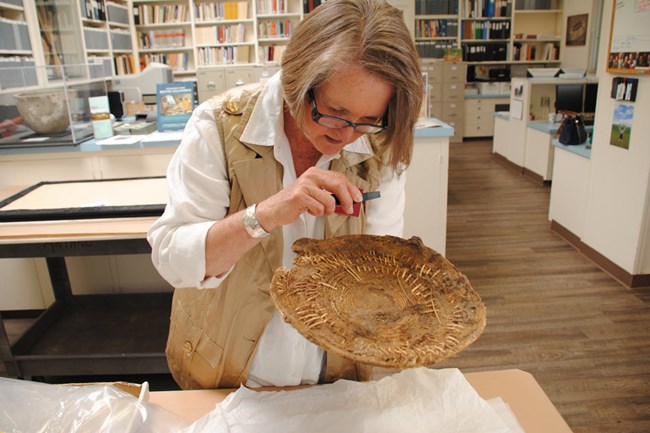
Chapter 18
Dr. Jan Timbrook, Curator of Ethnography, Santa Barbara Museum of Natural History, talks about the way Indigenous people used various plants on the Channel Islands.
Karana would have made her skirt from surf grass, a marine plant that looks like long green hair and can be found in the tidepools around the island. The strands were rinsed, straightened, and partly dried before being woven into mats, twisted to make string, or made into women’s skirts.
Most likely, Karana’s skirt would have had a few rows of twined surf grass weaving at the top, with the other strands hanging loose like long fringe down to her knees. Karana might have molded small bits of soft beach tar around the ends of the surf grass strands that hung near her knees. These little weights would make the skirt sway softly when she walked.
Surf grass can only be made into flexible items, like bags and nets, not rigid containers. The only plant on San Nicolas that could be used as basket material is willow. Slender stalks of sandbar willow can be fashioned into openwork carrying baskets used when harvesting clams, mussels, or other shellfish.
It is possible that some baskets used by the Nicoleños, especially those used for boiling liquids with hot rocks, were obtained through trade with mainland peoples. George Nidever, who retrieved the Lone Woman from San Nicolas Island in 1853, watched the Lone Woman make water bottle baskets while they were still on the island.
-
Listen to chapter 18 entry
Learn about use of island plants for mats, string, skirts, bags, nets, and baskets.
Last updated: April 25, 2025
